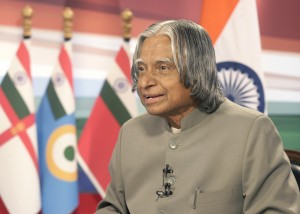APJ ABDUL KALAM BIOGRAPHY IN ENGLISH
EARLY LIFE
A Tamil Muslim own circle of relatives within Avul Pakir Jainulabdeen Abdul Kalam.
Where is APJ Abdul Kalam born? born on 15 October 1931 to side the pilgrimage centre of Rameswaram on Pamban Island, then withinside the Madras Presidency and now withinside the State of Tamil Nadu. His father Jainulabdeen became a ship proprietor and imam of a nearby mosque; his mom Ashiamma became a housewife.His father owned a ferry that took Hindu pilgrims to and fro among Rameswaram and the now uninhabited Dhanushkodi.Kalam became the youngest of 4 brothers and one sister in his own circle of relatives.His ancestors have been rich buyers and landowners, with severa residences and big tracts of land. Their enterprise had concerned buying and selling groceries among the mainland and the island and to and from Sri Lanka, in addition to ferrying pilgrims among the mainland and Pamban. As a result, the own circle of relatives obtained the identify of "Mara Kalam Iyakkivar" (timber boat steerers), which over time have become shortened to "Marakier." With the hole of the Pamban Bridge to the mainland in 1914, however, the companies failed and the own circle of relatives fortune and residences had been misplaced over time, aside from the ancestral home.By his early childhood, Kalam's own circle of relatives had grow to be poor; at an early age, he bought newspapers to complement his own circle of relatives's income.
In his college years, Kalam had common grades however became defined as a vivid and hardworking pupil who had a robust choice to learn. He spent hours on his studies, in particular mathematics.After finishing his schooling on the Schwartz Higher Secondary School, Ramanathapuram, Kalam went on to wait Saint Joseph's College, Tiruchirappalli, then affiliated with the University of Madras, from in which he graduated in physics in 1954.He moved to Madras in 1955 to have a look at aerospace engineering in Madras Institute of Technology.While Kalam became running on a senior elegance challenge, the Dean became disenchanted together along with his loss of development and threatened to revoke his scholarship until the challenge became completed in the subsequent 3 days. Kalam met the deadline, impressing the Dean, who later stated to him, "I became placing you below pressure and asking you to fulfill a hard deadline".He narrowly ignored reaching his dream of turning into a fighter pilot, as he positioned 9th in qualifiers, and simplest 8 positions had been to be had withinside the IAF.
Career as a scientist
After graduating from the Madras Institute of Technology in 1960, Kalam joined the Aeronautical Development Establishment of the Defence Research and Development Organisation (via way of means of Press Information Bureau, Government of India) as a scientist after turning into a member of the Defence Research & Development Service (DRDS). He commenced his profession via way of means of designing a small hovercraft, however remained unconvinced via way of means of his preference of a activity at DRDO.Kalam became additionally a part of the INCOSPAR committee running below Vikram Sarabhai, the famend area scientist.In 1969, Kalam became transferred to the Indian Space Research Organisation (ISRO) in which he became the challenge director of India's first Satellite Launch Vehicle (SLV-III) which correctly deployed the Rohini satellite tv for pc in near-earth orbit in July 1980; Kalam had first commenced paintings on an expandable rocket challenge independently at DRDO in 1965.In 1969, Kalam obtained the authorities's approval and multiplied the programme to consist of greater engineers.
In 1963 to 1964, he visited NASA's Langley Research Center in Hampton, Virginia; Goddard Space Flight Center in Greenbelt, Maryland; and Wallops Flight Facility.Between the Nineteen Seventies and 1990s, Kalam made an attempt to expand the Polar Satellite Launch Vehicle (PSLV) and SLV-III tasks, each of which proved to be a success.
Kalam became invited via way of means of Raja Ramanna to witness the country's first nuclear check Smiling Buddha because the consultant of TBRL, despite the fact that he had now no longer participated in its improvement. In the Nineteen Seventies, Kalam additionally directed tasks, Project Devil and Project Valiant, which sought to expand ballistic missiles from the era of the a success SLV programme.Despite the disapproval of the Union Cabinet, Prime Minister Indira Gandhi allocated mystery price range for those aerospace tasks thru her discretionary powers below Kalam's directorship.Kalam performed an imperative position convincing the Union Cabinet to hide the genuine nature of those categorised aerospace tasks.His studies and academic management delivered him high-quality laurels and status withinside the 1980s, which precipitated the authorities to provoke a sophisticated missile programme below his directorship.Kalam and Dr V S Arunachalam, metallurgist and medical adviser to the Defence Minister, labored at the thought via way of means of the then Defence Minister, R. Venkataraman on a suggestion for simultaneous improvement of a quiver of missiles rather than taking deliberate missiles one after another.R Venkatraman became instrumental in getting the cupboard popularity of allocating ₹ 3.88 billion for the challenge, named Integrated Guided Missile Development Programme (IGMDP) and appointed Kalam because the leader executive.Kalam performed a main element in growing many missiles below the challenge inclusive of Agni, an intermediate variety ballistic missile and Prithvi, the tactical floor-to-floor missile, despite the fact that the tasks had been criticised for mismanagement and price and time overruns.
Kalam served because the Chief Scientific Adviser to the Prime Minister and Secretary of the Defence Research and Development Organisation from July 1992 to December 1999. The Pokhran-II nuclear checks had been performed for the duration of this era wherein he performed an extensive political and technological position. Kalam served because the Chief Project Coordinator, together with Rajagopala Chidambaram, for the duration of the trying out phase.Media insurance of Kalam for the duration of this era made him the country's pleasant recognised nuclear scientist.
In 1998, together with heart specialist Soma Raju, Kalam advanced a low price coronary stent, named the "Kalam-Raju Stent".In 2012, the duo designed a rugged pill laptop for fitness care in rural areas, which became named the "Kalam-Raju Tablet".
To see the listing of books published via way of means of Dr Kala, click on here.
Presidency
Kalam served because the eleventh President of India, succeeding K. R. Narayanan. He gained the 2002 presidential election with an electoral vote of 922,884, surpassing the 107,366 votes gained via way of means of Lakshmi Sahgal. His time period lasted from 25 July 2002 to twenty-five July 2007.During his time period as president, he became affectionately called the People's President.
At what age Abdul Kalam died?
On 27 July 2015, Kalam travelled to Shillong to supply a lecture on "Creating a Livable Planet Earth" on the Indian Institute of Management Shillong. While mountaineering a flight of stairs, he skilled a few discomfort, however became capable of input the auditorium after a quick rest.At round 6:35 p.m. IST, simplest 5 mins into his lecture, he collapsed.He became rushed to the close by Bethany Hospital in a essential condition; upon arrival, he lacked a pulse or another symptoms and symptoms of life.Despite being positioned withinside the in depth care unit, Kalam became showed useless of a surprising cardiac arrest at 7:forty five p.m IST.
FAQ
Which of the following book is written by APJ Abdul Kalam?
Wings of Fire (1999), is the autobiography of the Missile Man of India and President of India, Dr. A. P. J. Abdul Kalam.
At what age Abdul Kalam died?
83 year


.jpeg)
Comments
Post a Comment